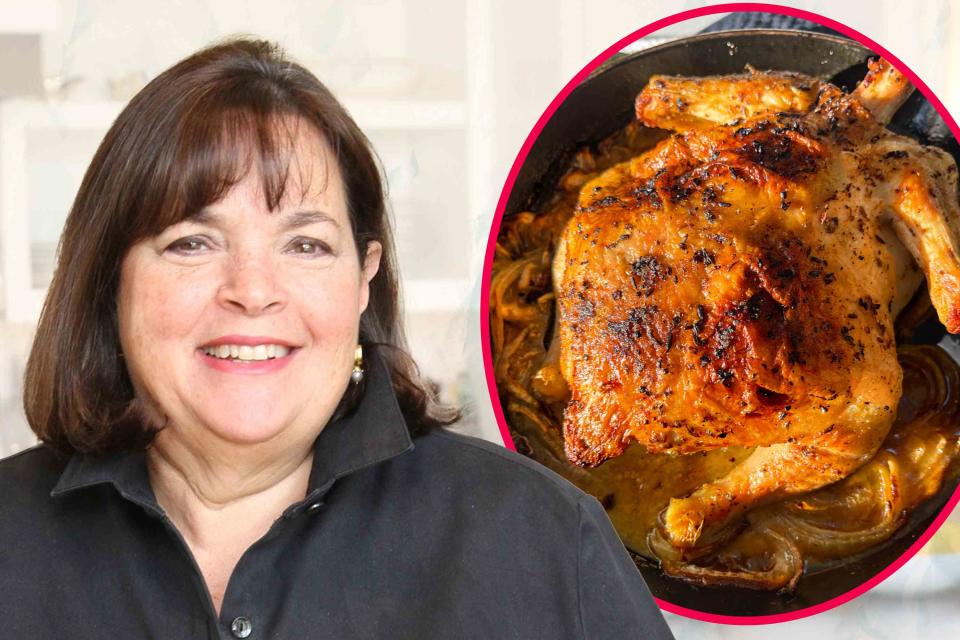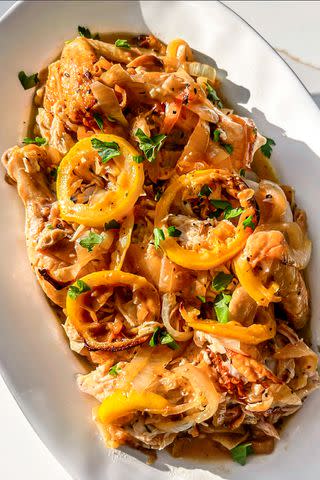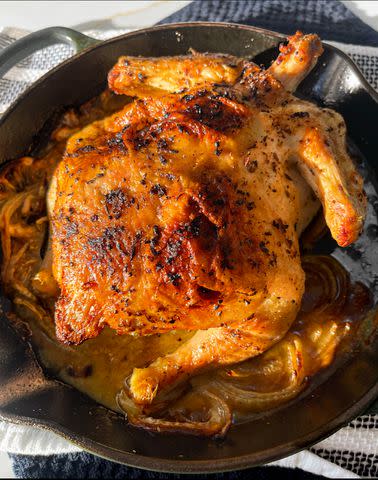The Ina Garten Chicken Recipe We All Should Know
Plus all my tips. Because I've made it a bajillion times.

If you asked me to choose one Ina Garten recipe—from her 13 cookbooks and two decades of sharing the most comforting and delightful recipes with the world—my family loves most, this lemony, golden, one-pan chicken comes to mind without missing a beat.
From its sheer simplicity, and always-juicy and rich flavor, there’s a whole lot to love about Ina Garten’s Skillet Roasted Lemon Chicken. Originally published in Ina’s cookbook, Cooking for Jeffrey, I have made this dish many times for my husband John—my Jeffrey—and it’s safe to say that this is our top pick. We also agree that this is the best chicken either one of us has ever had, both home-cooked and at restaurants!

Simply Recipes / Christine Fiorentino
How To Make Ina Garten’s Skillet Roasted Lemon Chicken
Start by preheating the oven to 450°F. Line the bottom of a cast iron skillet with sliced lemons, onions, and garlic. Then make a ground herb mixture with thyme leaves, fennel seeds, salt, and black pepper.
This is when I would suggest preparing the chicken—so that you don’t have to touch anything else with your chicken-y hands. Butterfly it by removing the backbone with kitchen shears. (Here’s a handy guide on how to do it!) Pat the chicken down with paper towels to dry. Rub olive oil and sprinkle the herb mixture all over the chicken.
Roast the chicken, skin-side up, for 30 minutes. Pour some white wine into the skillet—but not on the chicken, if you want to be rewarded with golden brown skin!—and roast for another 10 to 15 minutes. Let the chicken rest before cutting it into pieces for servings. Don’t leave behind any of the amazing juices on the bottom of the skillet.
Get Recipe with Title: Ina Garten's Skillet Roasted Lemon Chicken
It’s Cheaper To Buy a Whole Chicken
It’s possible to use chicken pieces in this recipe for ease—breasts, thighs, and legs—instead of buying a whole one and butterflying it. But have you noticed the price difference between a whole chicken and a broken-down one? It’s quite significant. A whole chicken is always cheaper. If the idea of butterflying it gives you pause, I have a tip for how to make it easier below.
Read More: How to Spatchcock (Butterfly) a Chicken

Simply Recipes / Christine Fiorentino
6 Tips For Making Ina Garten’s Skillet Roasted Lemon Chicken
There’s one step I often skip because I don’t have time and my cast iron skillet is too small to hold a splayed-open chicken. Instead, I roast the chicken upside down with the breast-side down. (Most roast chicken recipes out there recommend keeping the breast-side up.) The back of the bird holds the most fat, so as the chicken roasts, the fat and juices from the thighs and legs drain into the breasts, keeping them incredibly moist and tender. They also drip into Ina’s white wine pan sauce, making it even more flavorful.
Don’t have a mini food processor to prepare the herb mixture? Use a blender or a mortar and pestle. I find that the ingredients don’t need to be completely pulverized and that the thyme leaves are actually quite lovely, both visually and on the palate when they aren’t powdery.
Pat your chicken with paper towels until very, very dry. Do NOT skip this step! It ensures your chicken gets that gorgeous, crisp, golden hue.
You don’t need to master knife skills to slice the lemon, onion, and garlic. No need for precision here: the realm of 1/4 to 1/2 inch will be fine.
When returning the skillet to the oven for the last 10 to 15 minutes after the wine has been added, err on the side of caution. You can always cook it for longer, but you can’t turn back time if your chicken overcooks and becomes dry.
At the 10-minute mark, check the interior temperature of your chicken to see if it has reached 155 to 160°F. Every oven is different, so those five additional minutes can make a huge difference. My chicken is always done at exactly the 10-minute mark.
Ina suggests always having a meat thermometer and an oven thermometer in your kitchen tool arsenal. Every oven is different and the temperature will fluctuate as you open and close the oven. With a thermometer, you’ll never have to guess if your chicken is done cooking.

